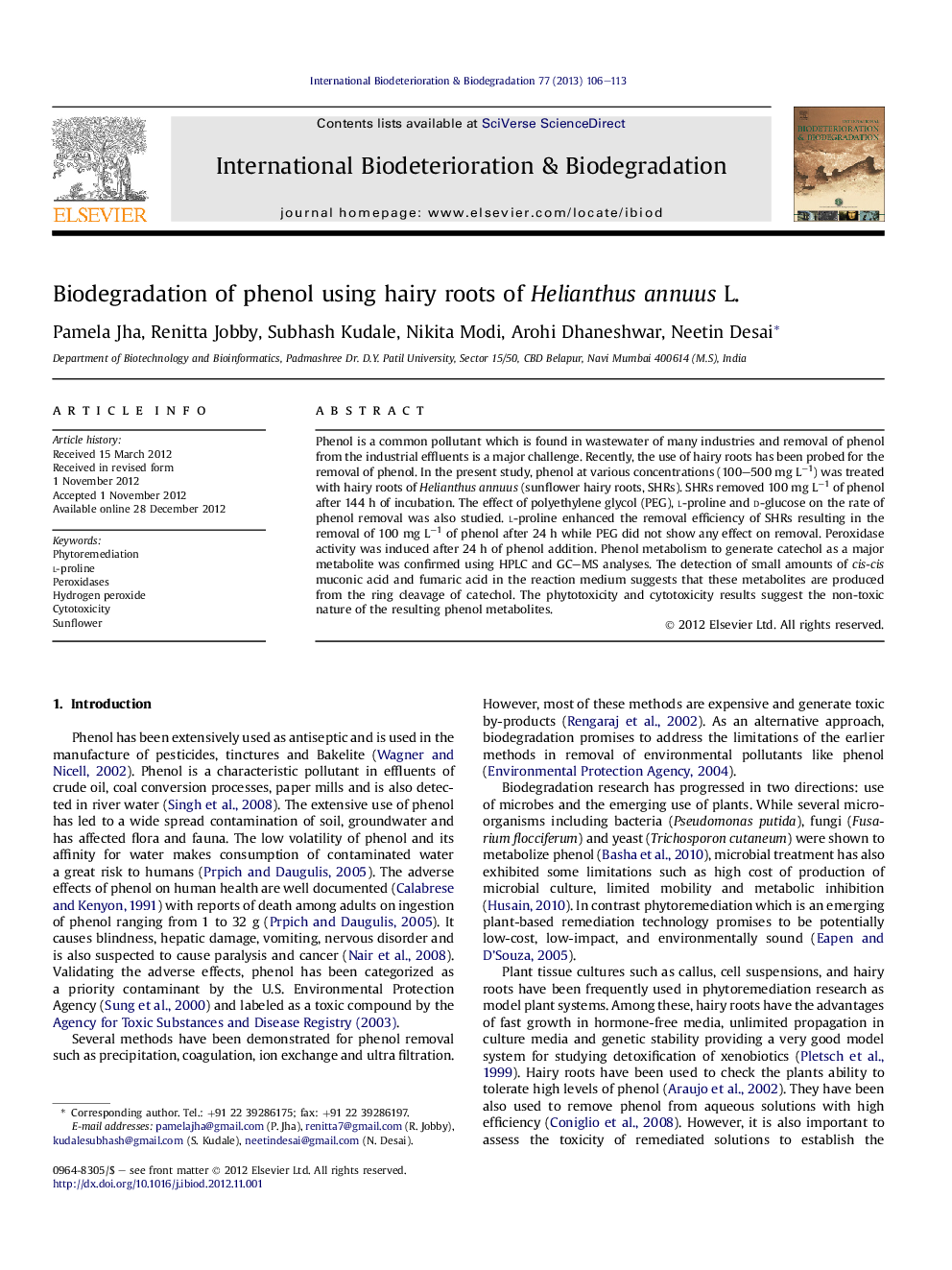| Article ID | Journal | Published Year | Pages | File Type |
|---|---|---|---|---|
| 4365050 | International Biodeterioration & Biodegradation | 2013 | 8 Pages |
Phenol is a common pollutant which is found in wastewater of many industries and removal of phenol from the industrial effluents is a major challenge. Recently, the use of hairy roots has been probed for the removal of phenol. In the present study, phenol at various concentrations (100–500 mg L−1) was treated with hairy roots of Helianthus annuus (sunflower hairy roots, SHRs). SHRs removed 100 mg L−1 of phenol after 144 h of incubation. The effect of polyethylene glycol (PEG), l-proline and d-glucose on the rate of phenol removal was also studied. l-proline enhanced the removal efficiency of SHRs resulting in the removal of 100 mg L−1 of phenol after 24 h while PEG did not show any effect on removal. Peroxidase activity was induced after 24 h of phenol addition. Phenol metabolism to generate catechol as a major metabolite was confirmed using HPLC and GC–MS analyses. The detection of small amounts of cis-cis muconic acid and fumaric acid in the reaction medium suggests that these metabolites are produced from the ring cleavage of catechol. The phytotoxicity and cytotoxicity results suggest the non-toxic nature of the resulting phenol metabolites.
► Hairy roots were induced in ornamental variety of Helianthus annuus and transgenic nature was confirmed using PCR. ► SHRs completely degraded phenol (100 mg/L) in 144 h and increase in peroxidase activity was observed. ► A possible pathway is proposed for phenol degradation based upon metabolites identified by GC–MS. ► Phytotoxicity and cytotoxicity confirmed the non-toxic nature of the degraded metabolite.
